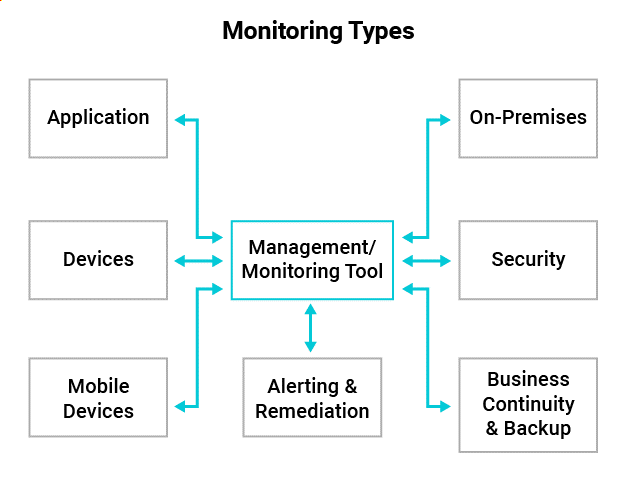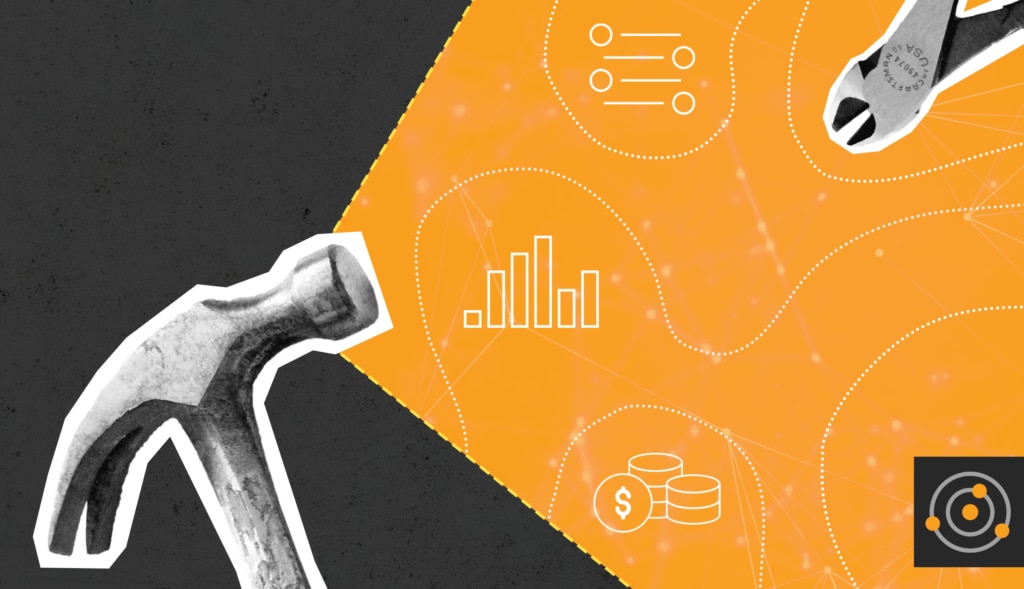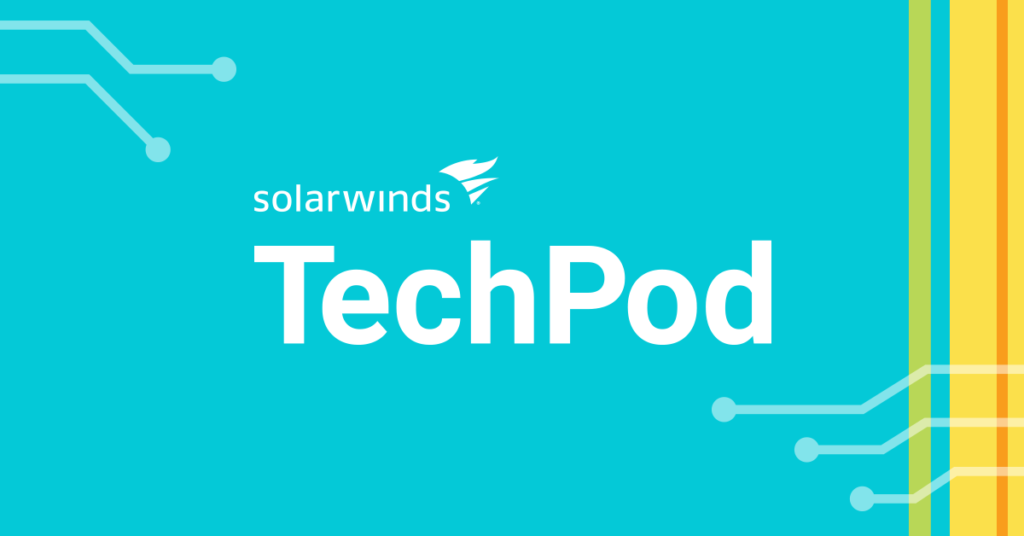Everyone loves tools. Whether you’re a weekend craftsman, an aspiring chef, or a serious IT professional, the tools you use can make your tasks much easier. Monitoring tools in IT are mainstays when it comes to keeping an eye on network infrastructure and enforcing company security policies. But just like anything in life, not all monitoring tools are built equally—in fact, many can harm your ability to respond to emerging issues within your network.
Find the Right Tool for the Job
It can be surprising to IT organizations when they discover how difficult it is to find comprehensive monitoring tools. Many tools are highly specialized or lack several features to support all applications, including sufficient
application alerting. These conditions can lead to tool sprawl due to an organization’s need to obtain multiple, non-cohesive tools to accomplish all of its monitoring tasks. Not only can this start to get expensive, but the manual nature of putting multiple reports together can lead to serious delays when it comes to reporting issues.
Avoiding tool sprawl and preventing application monitoring silos using individual monitoring solutions may require significant changes. Implementing integrated tools designed to provide support for multiple applications or network configurations is the ideal scenario to pursue.
The most effective IT monitoring tools include updates to support popular applications throughout their life cycle and present IT administrators with a single-pane-of-glass management dashboard. (Note: be suspicious of monitoring tools labeling themselves as free. These can introduce security risks or a pay-by-use model capable of quickly becoming expensive.)
Simplify and Integrate Your Tools
An important aspect of choosing a management and monitoring platform is understanding different areas of IT may require different types of solutions (see
Figure 1). Addressing as many areas of your IT stack as possible with one monitoring solution adds greater depth to your monitoring activities.
Additionally, such a solution will offer the improved ability to automate responses and detect anomalous events in any monitored system.

Figure 1: Typical systems requiring monitoring within an organization
Centralized monitoring and systems management presents IT departments with a set of fully integrated IT tools. These pay immediate dividends in their ability to reduce software licensing and maintenance costs and provide the ability to add metering for software usage to drive further savings. Additionally, utilizing integrated management and monitoring tools in your environment helps eliminate the confusion and costs associated with siloed activities.
Organizations can further realize cost reductions through integrated monitoring tools, as they can provide proactive responses to emerging problems. Direct benefits include the reduction of incidents requiring action from support teams and the ability to provide end-to-end IT stack visibility into overall performance and availability. These combine to boost overall productivity across the organization, thanks to improved systems availability.
Defining what warrants monitoring in your organization is necessary before you start looking for a monitoring solution suited to your business requirements. Additionally, each piece of your IT stack will have its own unique characteristics in terms of role, information flow, and security needing to be tracked. After building an understanding of each core IT stack function and what it needs, you’ll be able to employ a comprehensive monitoring product selection strategy.
Application Monitoring
Application monitoring mostly involves keeping an eye on activity logs to see how applications are being used. This includes watching user access roles, the data being accessed, and how data is being used. The most effective application monitoring solutions provide in-depth insights into the elements comprising a healthy application (such as response times and data traces) and a window into logging data.
Application monitoring tools must provide these functions and be integrated into database and network monitoring. Together, these serve to bolster application response times through proactive, rapid responses to emerging performance issues.
Network Monitoring
Almost every network monitoring tool provides the basics:
IP address management, DNS host monitoring, and packet tracking. But where many network tools fall short is when it comes to making it seamless to watch everything affecting network traffic, either internally or externally.
Network monitoring tools must provide the ability to maintain a vigil over all network-connected devices, from a smartphone accessing the cloud to your on-premises storage area network (SAN).
Compliance Monitoring
If you still find yourself trying to make a case for implementing a comprehensive monitoring tool, compliance monitoring is the ace up your sleeve. This is especially the case if your organization must adhere to some of the most common sets of compliance regulations, such as HIPAA, PCI DSS, or SOX.
Effective compliance solutions provide templates based on these regulatory types, allowing you to quickly design and implement a comprehensive compliance monitoring strategy. This includes the ability to monitor log data in real time from any type of device on your network, including common appliances like routers and switches.
The ability to collect, correlate, and export to reports any required log information from your IT assets is an essential element of comprehensive compliance monitoring tools. Your compliance solution should include reporting templates capable of aligning to the expected formats for the most common regulatory agencies, and it must provide in-depth forensics to satisfy internal audit requirements.
Improving Monitoring Tools to Ensure System Health
The management and systems monitoring solution you choose to help you keep tabs on all the pieces in your IT stack must meet a short list of requirements. It must integrate across multiple systems and be accessible to IT staff via one intuitive, dashboard-based interface. It should also be scalable, so its ability to help maintain high system service levels can continue, no matter how fast you grow or when your systems evolve to higher capabilities.
Learn how
SolarWinds Observability Self-Hosted (formerly known as Hybrid Cloud Observability) can help organizations of any size modernize their IT agility through an integrated IT infrastructure, application, and database performance monitoring solution.
 Figure 1: Typical systems requiring monitoring within an organization
Centralized monitoring and systems management presents IT departments with a set of fully integrated IT tools. These pay immediate dividends in their ability to reduce software licensing and maintenance costs and provide the ability to add metering for software usage to drive further savings. Additionally, utilizing integrated management and monitoring tools in your environment helps eliminate the confusion and costs associated with siloed activities.
Organizations can further realize cost reductions through integrated monitoring tools, as they can provide proactive responses to emerging problems. Direct benefits include the reduction of incidents requiring action from support teams and the ability to provide end-to-end IT stack visibility into overall performance and availability. These combine to boost overall productivity across the organization, thanks to improved systems availability.
Defining what warrants monitoring in your organization is necessary before you start looking for a monitoring solution suited to your business requirements. Additionally, each piece of your IT stack will have its own unique characteristics in terms of role, information flow, and security needing to be tracked. After building an understanding of each core IT stack function and what it needs, you’ll be able to employ a comprehensive monitoring product selection strategy.
Figure 1: Typical systems requiring monitoring within an organization
Centralized monitoring and systems management presents IT departments with a set of fully integrated IT tools. These pay immediate dividends in their ability to reduce software licensing and maintenance costs and provide the ability to add metering for software usage to drive further savings. Additionally, utilizing integrated management and monitoring tools in your environment helps eliminate the confusion and costs associated with siloed activities.
Organizations can further realize cost reductions through integrated monitoring tools, as they can provide proactive responses to emerging problems. Direct benefits include the reduction of incidents requiring action from support teams and the ability to provide end-to-end IT stack visibility into overall performance and availability. These combine to boost overall productivity across the organization, thanks to improved systems availability.
Defining what warrants monitoring in your organization is necessary before you start looking for a monitoring solution suited to your business requirements. Additionally, each piece of your IT stack will have its own unique characteristics in terms of role, information flow, and security needing to be tracked. After building an understanding of each core IT stack function and what it needs, you’ll be able to employ a comprehensive monitoring product selection strategy.




